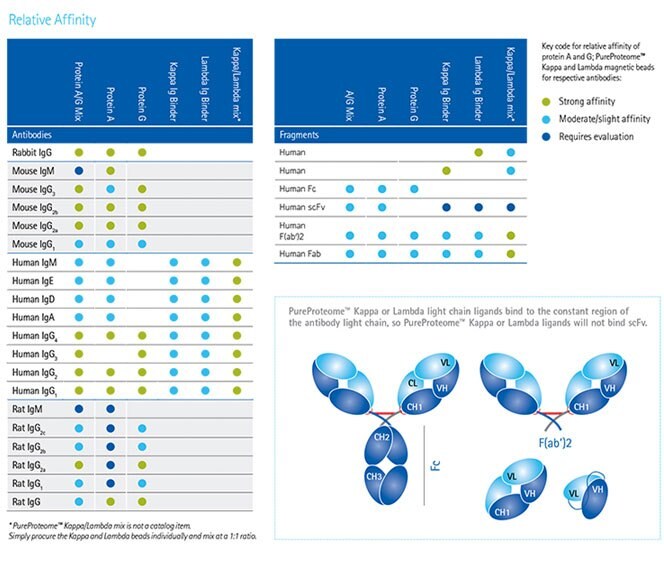Western Blot Analysis of Immunoprecipitation (IP-Western)
IP-Western analysis remains a popular technique for identifying protein-protein interactions and identifying unknown proteins in a multi-protein complex. The steps include cell lysis, formation of the antibody-antigen (immune) complex, precipitation of the immune complexes, and analysis by Western blotting.
Click on the Western Blot Analysis of Immunoprecipitation (IP-Western) topics to read about the possible causes and remedies:
| Possible Cause | Remedy | |
|---|---|---|
 High background, leading to nonspecific bands on Western blot | Non-specific binding to beads |
|
Wash buffer not stringent enough |
| |
Non-specific antibody binding |
| |
Inadequate washing |
|
| Possible Cause | Remedy |
|---|---|
Protein degradation, dephosphorylation, and denaturation during lysis step |
|
Lysis buffer too stringent |
|
Antibody not bound to the beads |
|
Not enough antibody-antigen binding |
|
Agarose beads accidentally removed during precipitation step |
|
Mouse IgG or chicken antibody does not bind efficiently to protein G- or protein-A conjugated beads (for indirect immunoprecipitation) |
|
Target protein remains on the beads |
|
Disruption of protein complexes (in co-immunoprecipitation experiments) |
|
| Possible Cause | Remedy | |
|---|---|---|
Heavy and light chains of the primary antibody are being recognized by the secondary antibody |
| |
 In a cross-linking IP western, the heavy and light chains of the primary capture antibody are excluded from the sample. |
| |

Materials
Loading
Melden Sie sich an, um fortzufahren.
Um weiterzulesen, melden Sie sich bitte an oder erstellen ein Konto.
Sie haben kein Konto?